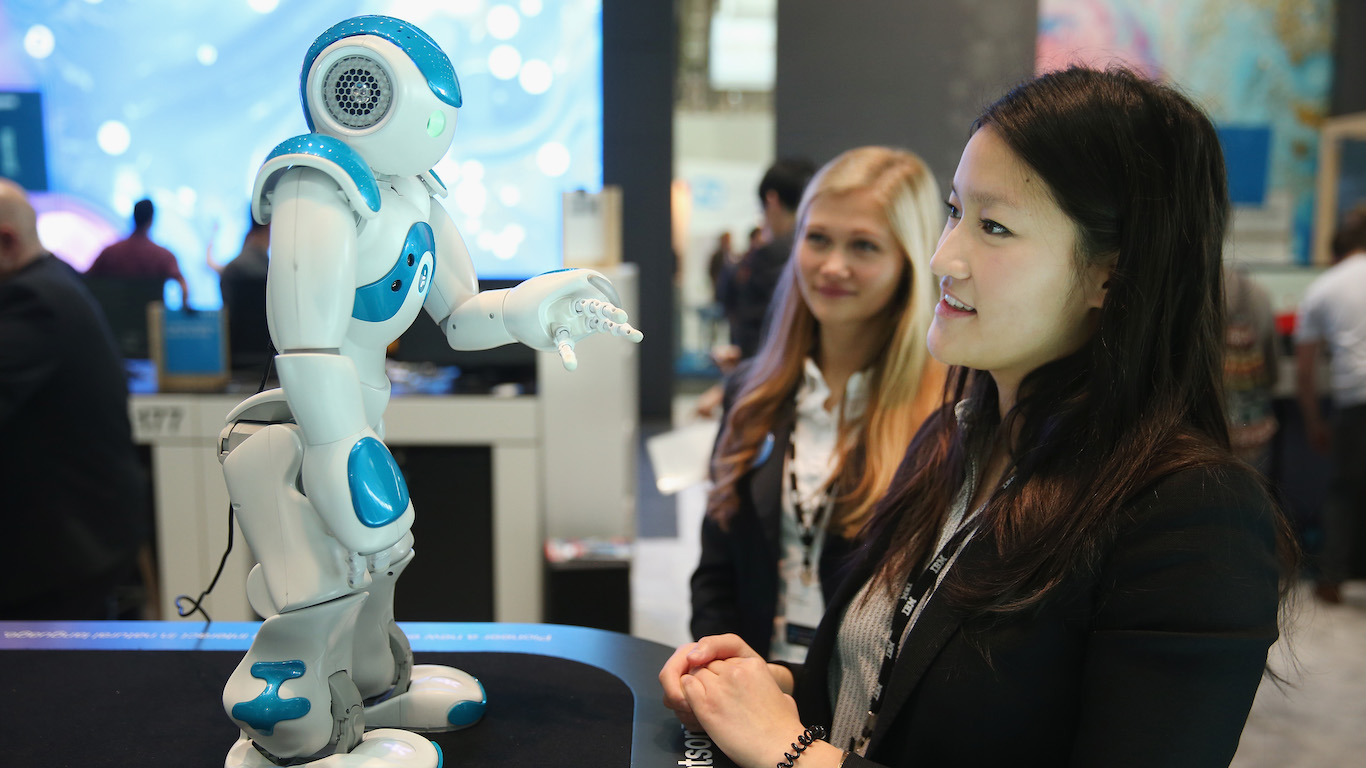
Artificial intelligence is a branch of computer science that aims to create computers and machines that learn, work, and react like humans. The possibilities are endless, as evidenced by expanding research and advancements in the field. More than 1.6 million scientific papers related to AI were published between 1960 and early 2018.
The World Intellectual Property Organization (WIPO) has recently released its first report on technology trends in artificial intelligence. The report, “WIPO Technology Trends 2019: Artificial Intelligence,” includes a ranking of the global institutions that have filed the most patent applications for AI inventions, which often comprise several patents and are called a patent family. Of the top 20 organizations filing patent families, all but two are companies.
Twelve Japan-based companies are in the top 20 along with three U.S.-based companies, two from South Korea, two from Germany, and one from China. It is worth noting that of the top 20 universities and public research organizations that have filed for AI patents, 17 are based in China and the other three are in South Korea.
The World Intellectual Property Organization (WIPO) researchers collected and analyzed patent data using the FAMPAT database. It is important to note that the WIPO does not publish exact figures for most of these organizations, so these totals are estimates based on the chart published in the “WIPO Technology Trends 2019: Artificial Intelligence” report when an exact figure was not provided. LAI patent families (or filings) can be further categorized as either AI techniques that use different core algorithmic approaches to implement AI functional applications, or the applications themselves. For each organization, we list the most common category of inventions filed for both applications and technique patent families.
Click here to see the 20 companies leading the A.I. revolution.
Click here to read our detailed findings and methodology.
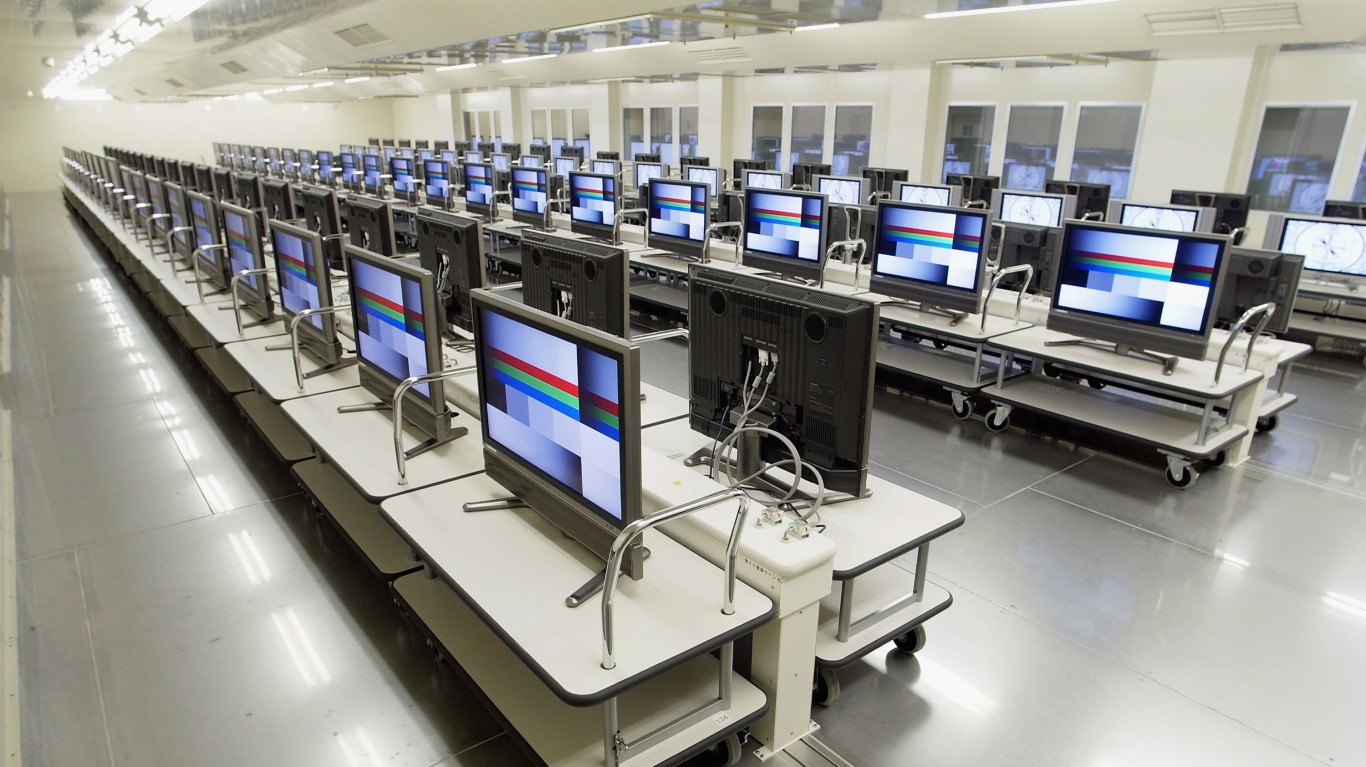
20. Sharp
> Worldwide total patent family filings: 1,800
> Top AI functional application filing category: Computer vision, 1,086
> Top AI techniques filing category: Machine learning, 329
Japanese consumer electronics company Sharp has staked a claim to the marriage of AI and IoT with a program it calls AIoT, a network of AI-enabled devices that constantly monitor how they are used and adapt to offer personalized services and solutions. The company claims to have more than 150 such products in categories as diverse as pet care and audiovisual systems.
[in-text-ad]
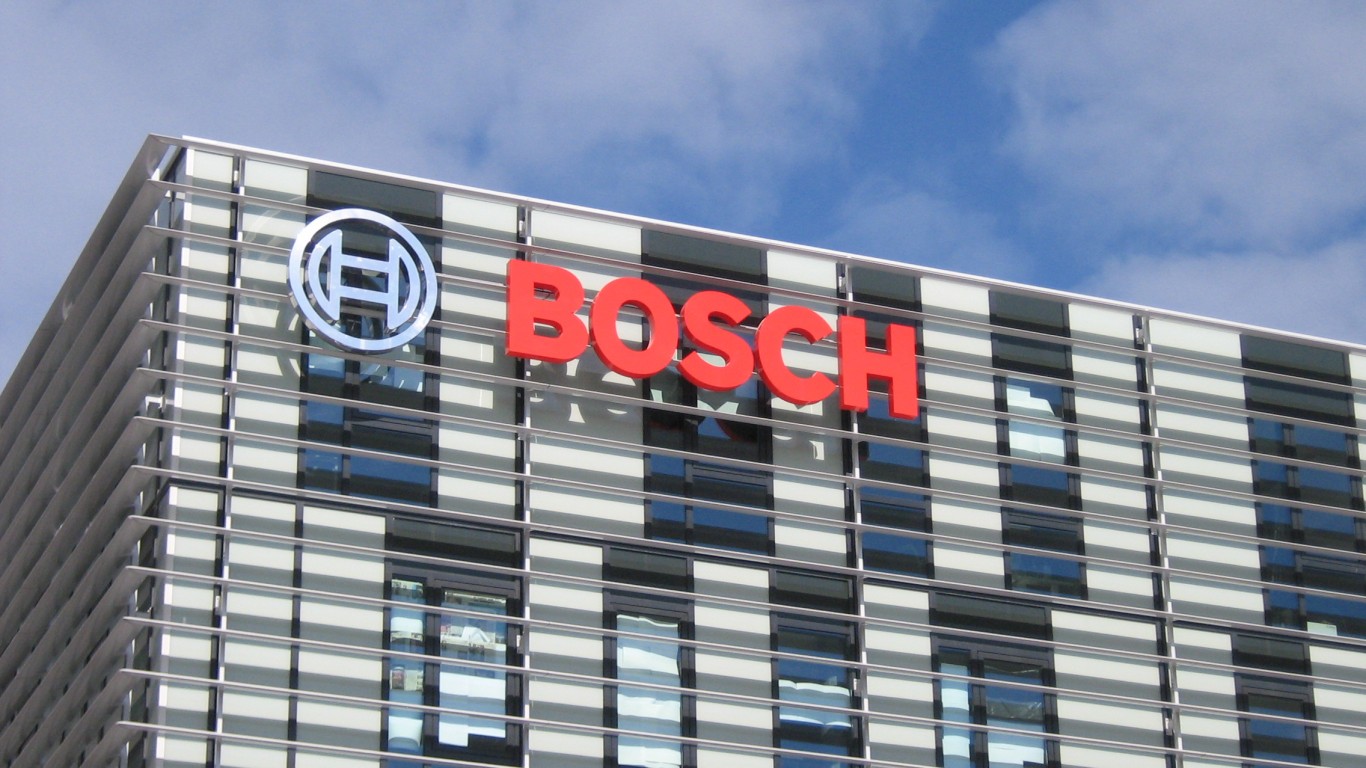
19. Bosch
> Worldwide total patent family filings: 1,900
> Top AI functional application filing category: Computer vision, 687
> Top AI techniques application filing category: Machine learning, 298
The German engineering and electronics company plans to invest about $340 million by 2021 on AI research at three AI centers around the world. Among the projects Bosch is working on is a deep network for video and radar signal processing for autonomous vehicle sensors.
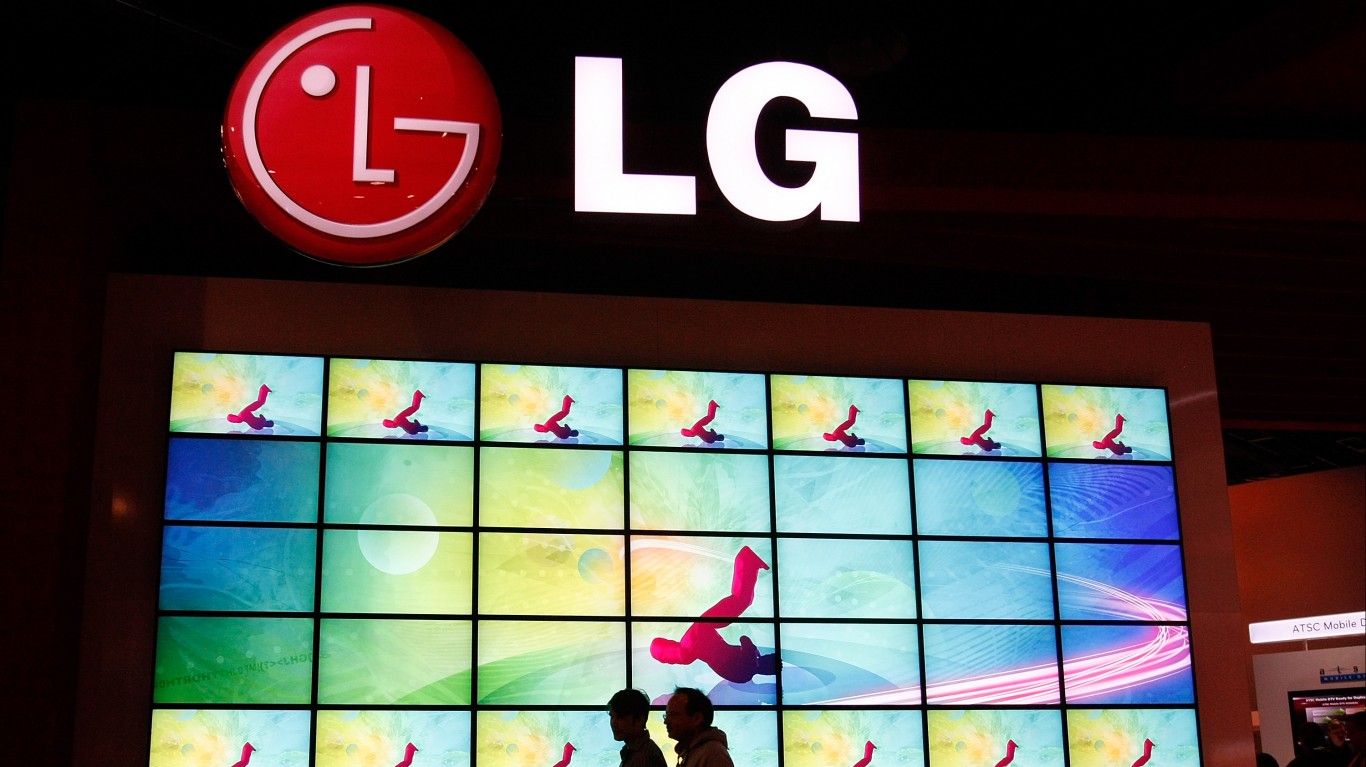
18. LG Corp.
> Worldwide total patent family filings: 2,200
> Top AI functional application filing category: Computer vision, 1,362
> Top AI techniques application filing category: Machine learning, 271
Korean electronics giant LG’s ThinQ brand offers various products that are integrated with AI functions and services. These products, the company says, “can share and study information between themselves.” As with other AI smart-home forays, LG seeks to train the devices to understand how people use them in order to offer a tailored experience to each user.
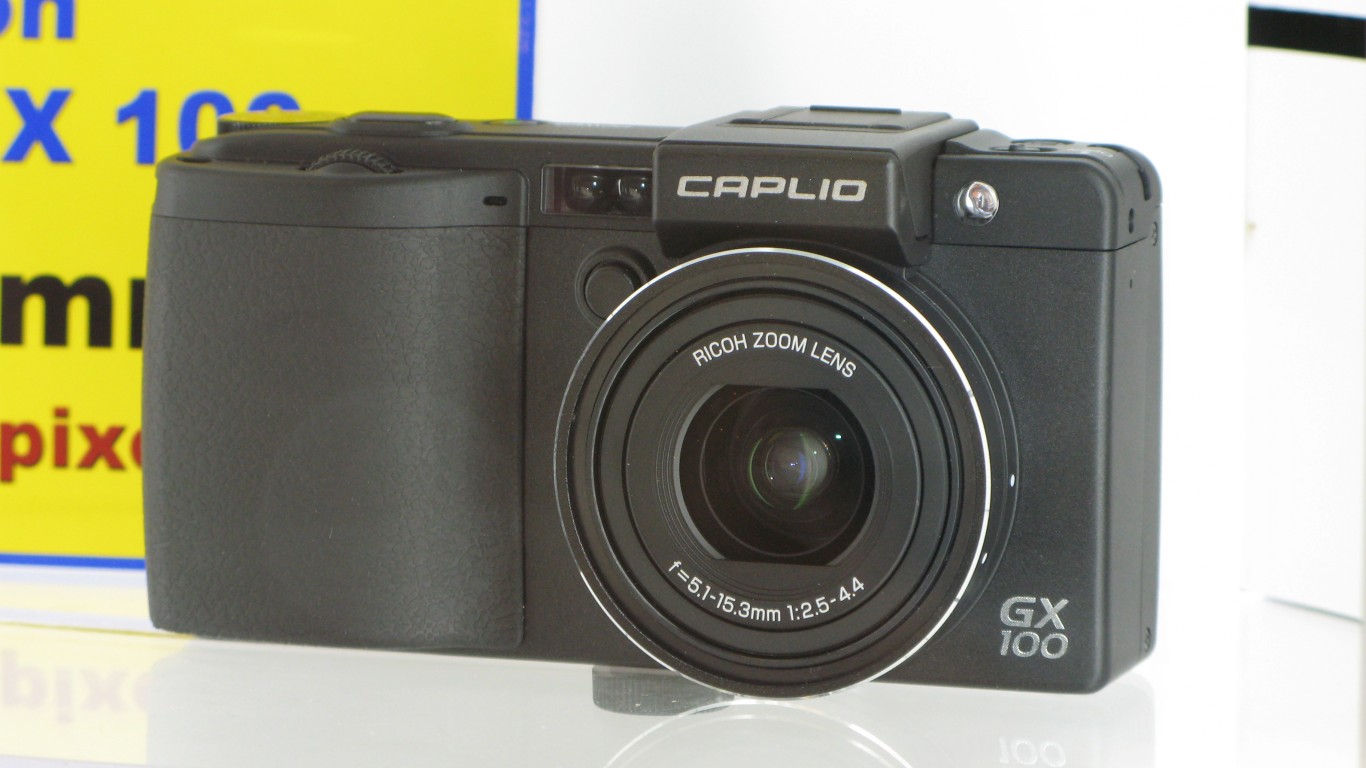
17. Ricoh
> Worldwide total patent family filings: 2,500
> Top AI functional application filing category: Computer vision, 1,993
> Top AI techniques application filing category: Machine learning, 502
As an imaging and electronics company, Ricoh’s AI focus has been on machine vision and image processing. For example, the company has developed a camera system that measures road surface conditions using an ordinary vehicle instead of a specialized one to inspect and schedule maintenance.
[in-text-ad-2]
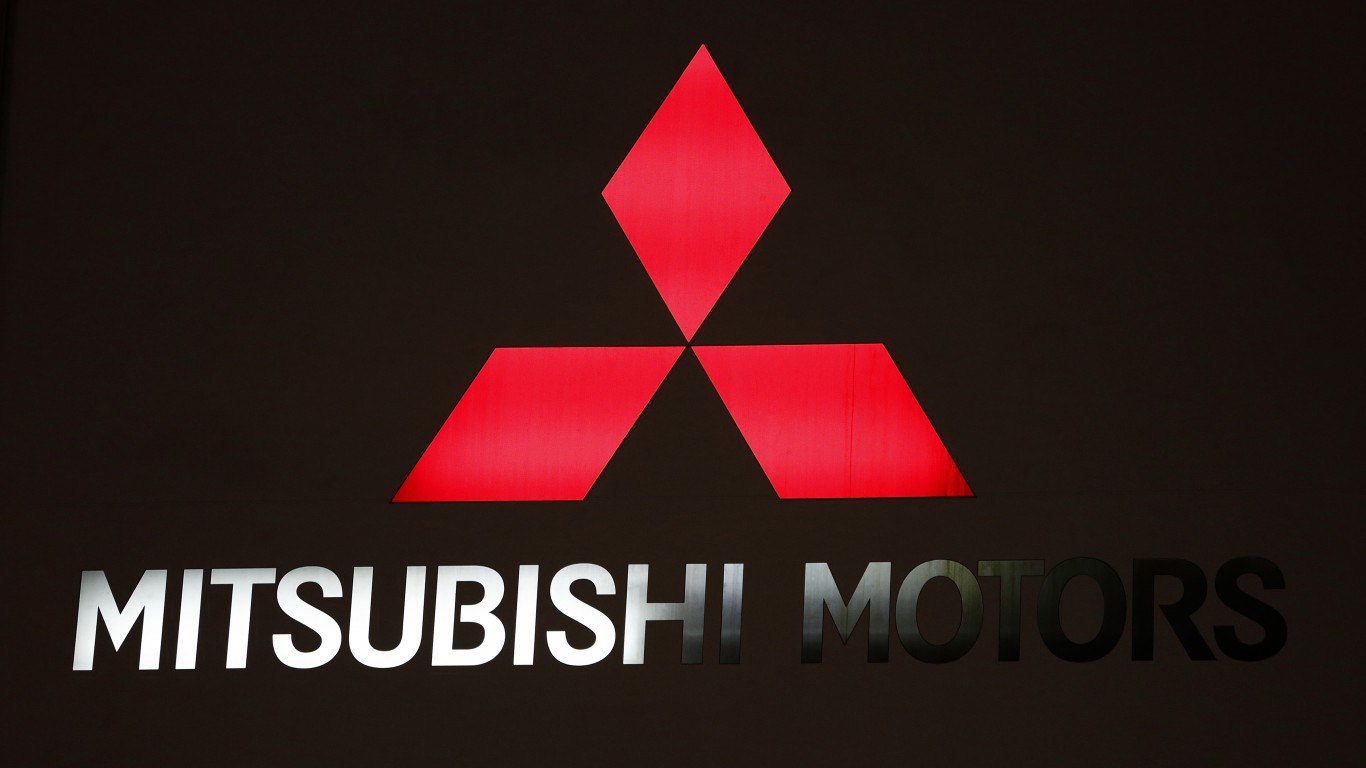
16. Mitsubishi
> Worldwide total patent family filings: 2,700
> Top AI functional application filing category: Computer vision, 1,441
> Top AI techniques application filing category: Machine learning, 917
In addition to its partnership with Hitachi on a smart power plant, Mitsubishi conducts AI research in computer vision, speech and audio processing, and data analytics. The company also builds cars, and at this year’s CES, Mitsubishi showed off its Emirai 4 smart mobility concept car with an augmented reality, heads-up display, smart-home and mobile payment integration, and biometric authentication.
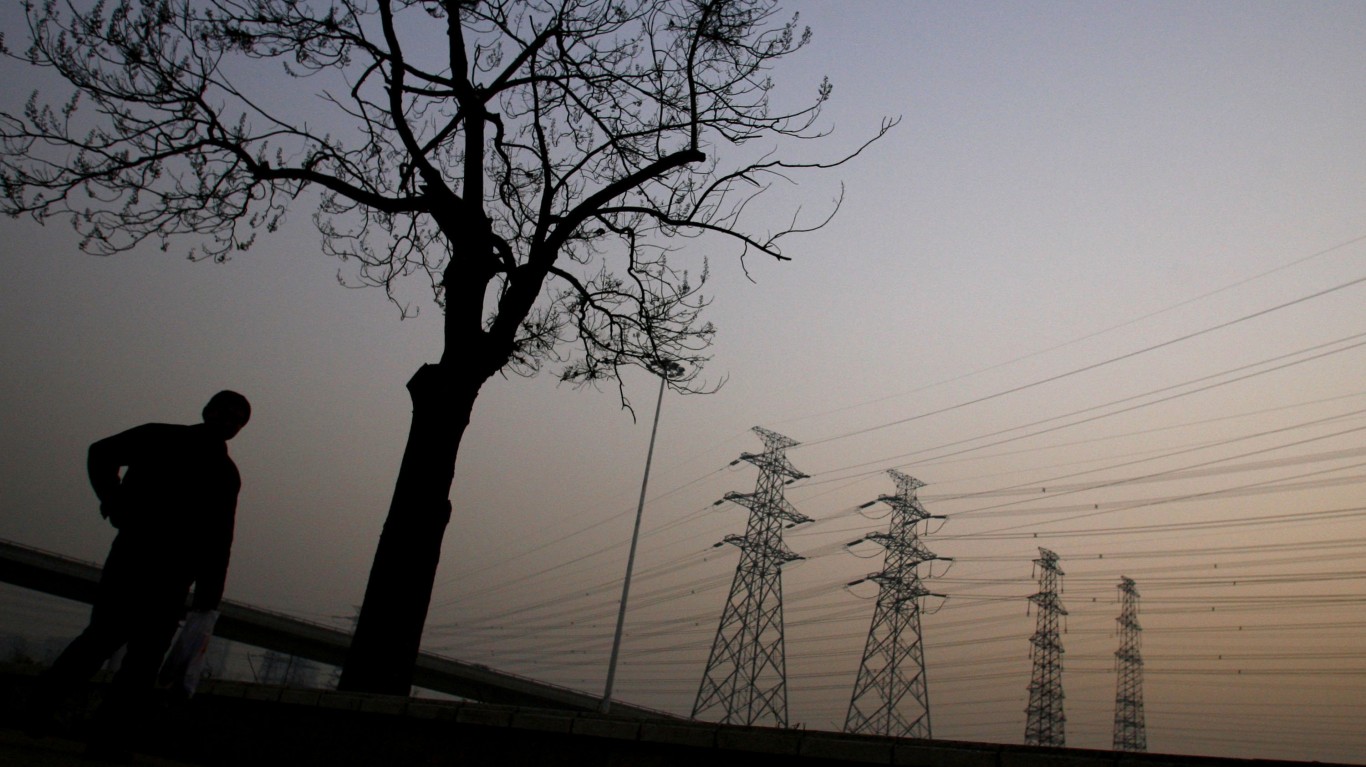
15. State Grid Corporation of China
> Worldwide total patent family filings: 2,700
> Top AI functional application filing category: Computer vision, 567
> Top AI techniques application filing category: Machine learning, 1,770
SGCC is a state-owned power company focusing on AI development in areas including power grid control, power distribution and utilization networks, wind farms, and green energy. In December, SGCC launched a demonstration project for an AC/DC distribution network that connects a data center with solar photovoltaic power plants. The project integrates a smart grid and cloud computing technology that the company says “predicts a new form of power grid development for the future.”
[in-text-ad]
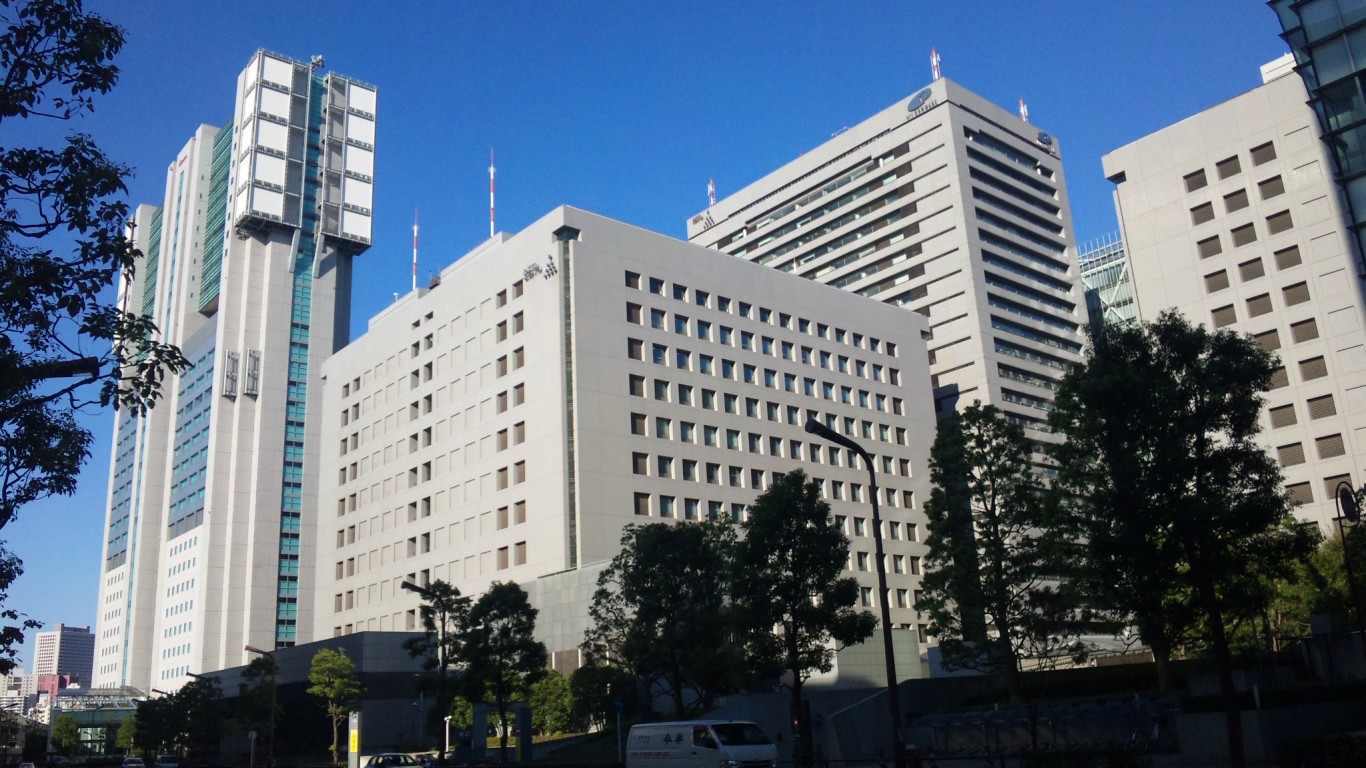
14. NTT
> Worldwide total patent family filings: 2,800
> Top AI functional application filing category: Computer vision, 1,336
> Top AI techniques application filing category: Machine learning, 1,294
Japan’s largest telecom provider has AI products and development projects in industries as varied as agriculture and health care. NTT recently acquired an NEC NeoFace system that it plans to use to demonstrate the effectiveness of a facial recognition system with a high-speed 5G network.
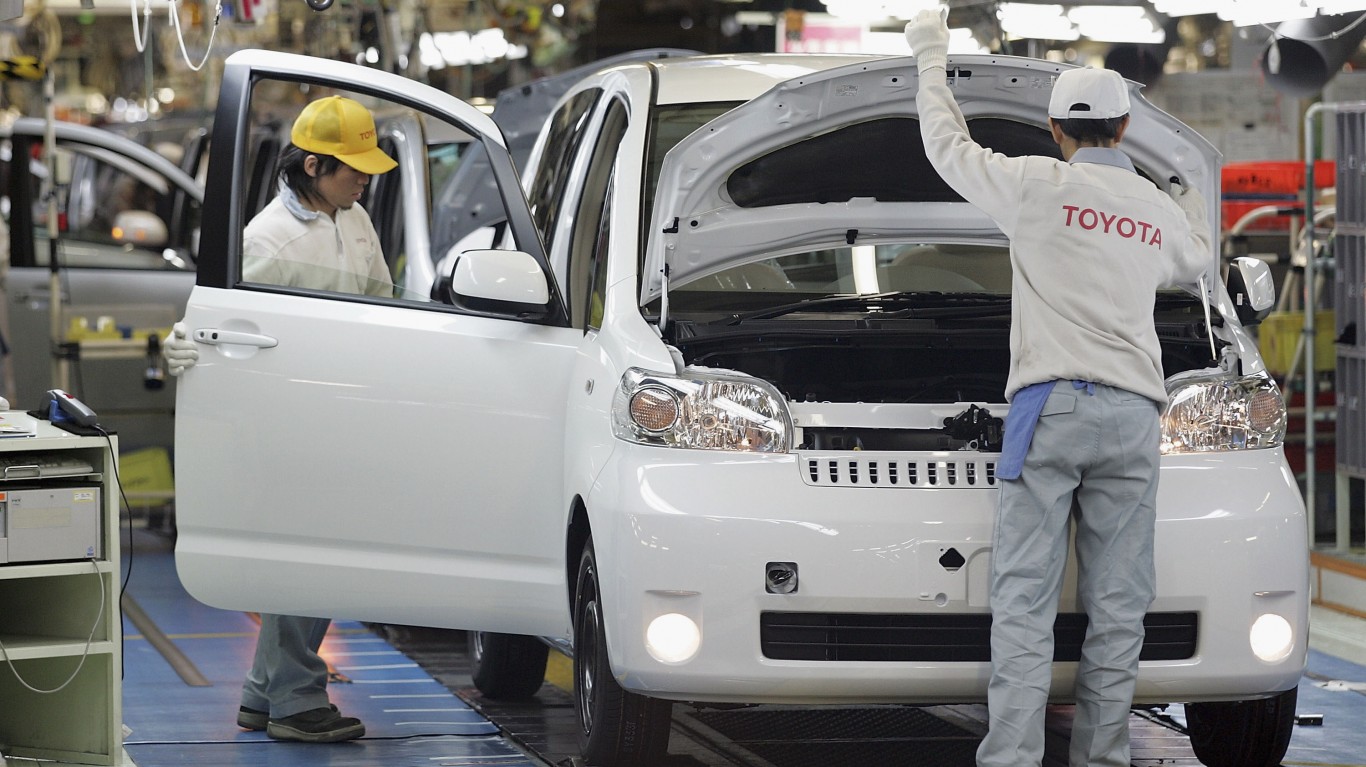
13. Toyota Motor Co. Ltd.
> Worldwide total patent family filings: 2,900
> Top AI functional application filing category: Computer vision, 1,394
> Top AI techniques application filing category: Machine learning, 582
It is no surprise that Toyota’s AI-related efforts focus on mobility, the latest industry buzzword to encapsulate all modes of transportation, from scooters to flying cars. In 2017, the company established a venture capital arm in Silicon Valley and has made several investments in robotics and AI startups.
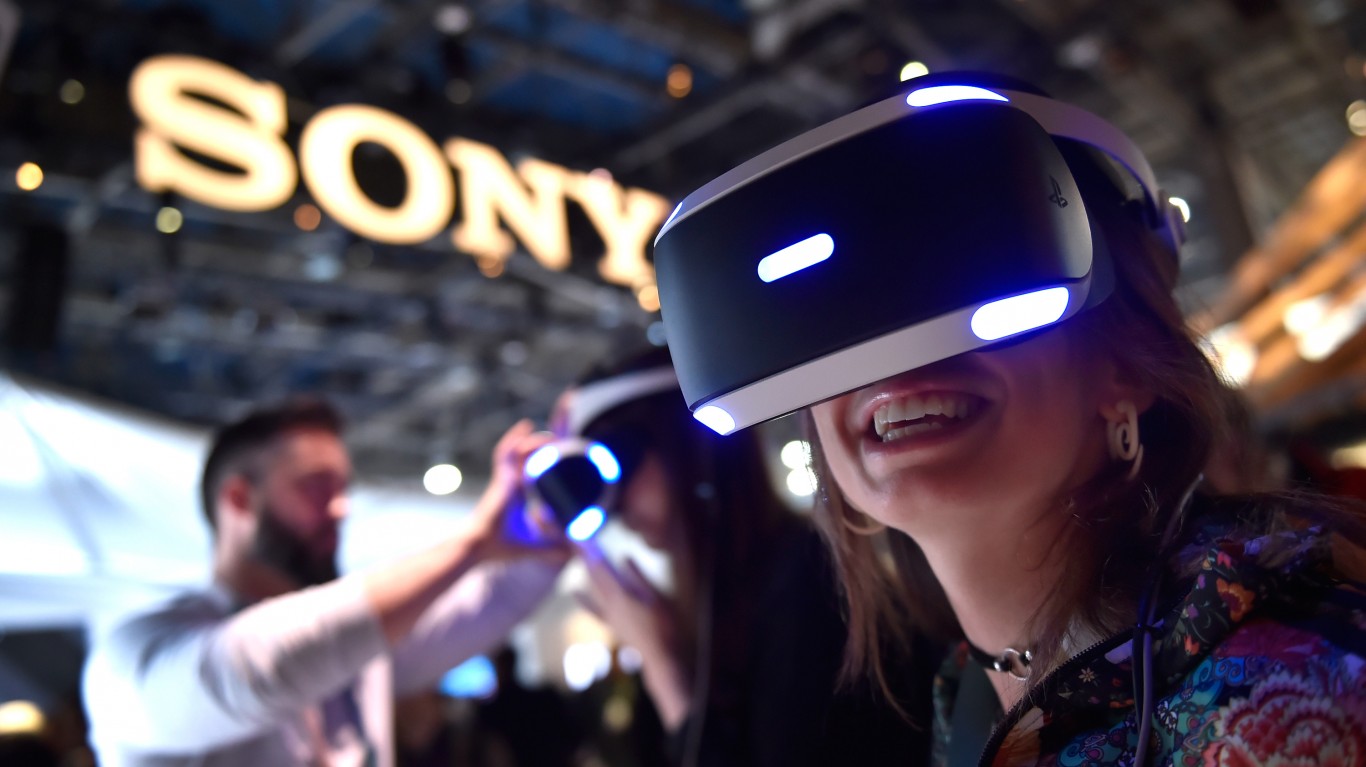
12. Sony Corp.
> Worldwide total patent family filings: 3,500
> Top AI functional application filing category: Computer vision, 2,477
> Top AI techniques application filing category: Machine learning, 923
Sony has struggled with sales for the very consumer electronics products its known for–TVs, gaming consoles, cameras, and smartphones. Last May, the company’s new CEO, Kenichiro Yoshida, acknowledged the problem and declared that the key to Sony’s survival “lies in the extent to which we can take control of data and AI.” The company’s PlayStation network and its 80 million monthly active users would jumpstart Sony’s efforts.
[in-text-ad-2]
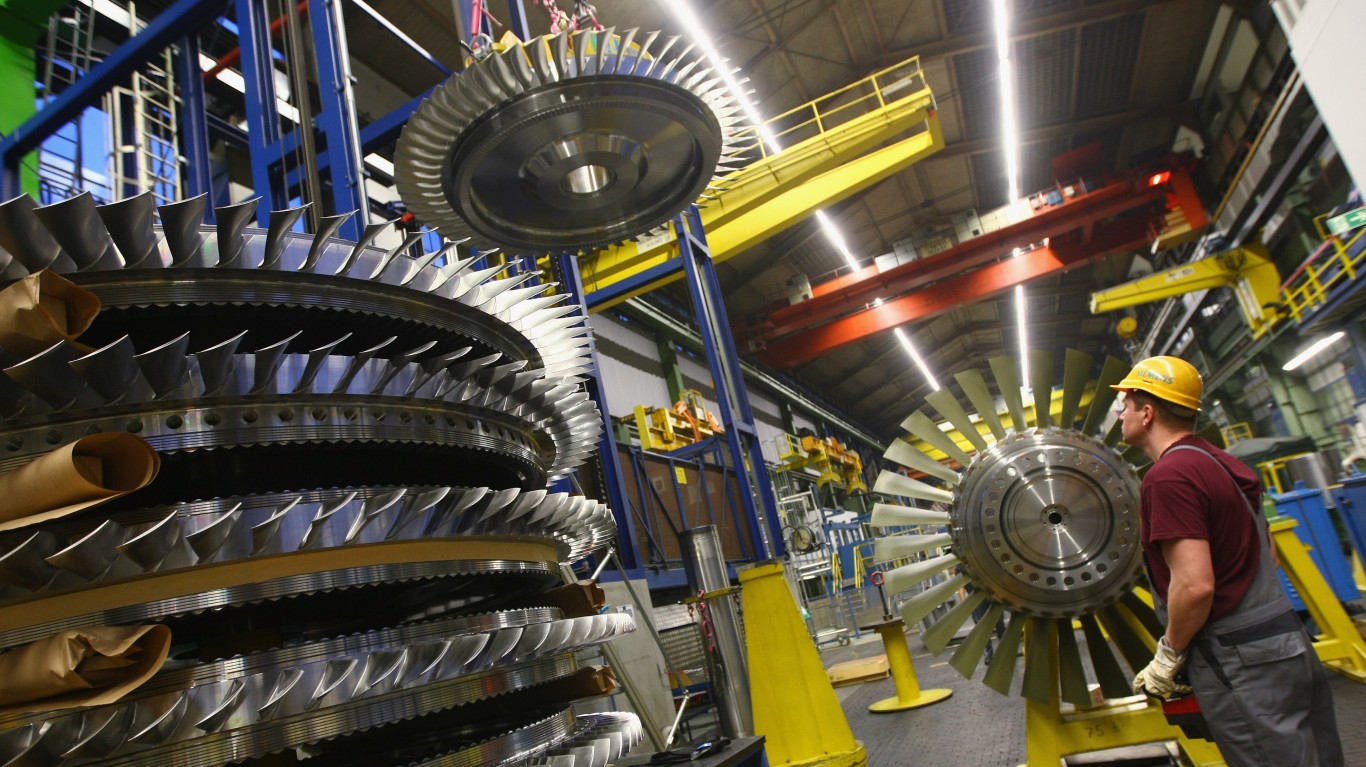
11. Siemens
> Worldwide total patent family filings: 3,600
> Top AI functional application filing category: Computer vision, 1,792
> Top AI techniques application filing category: Machine learning, 1,689
The German industrial giant focuses on AI-driven industrial processes like optimizing gas turbines, improving smart grid monitoring, and using predictive maintenance for industrial facilities. Siemens Healthineers also use deep learning and AI to automate and standardize medical diagnostics.
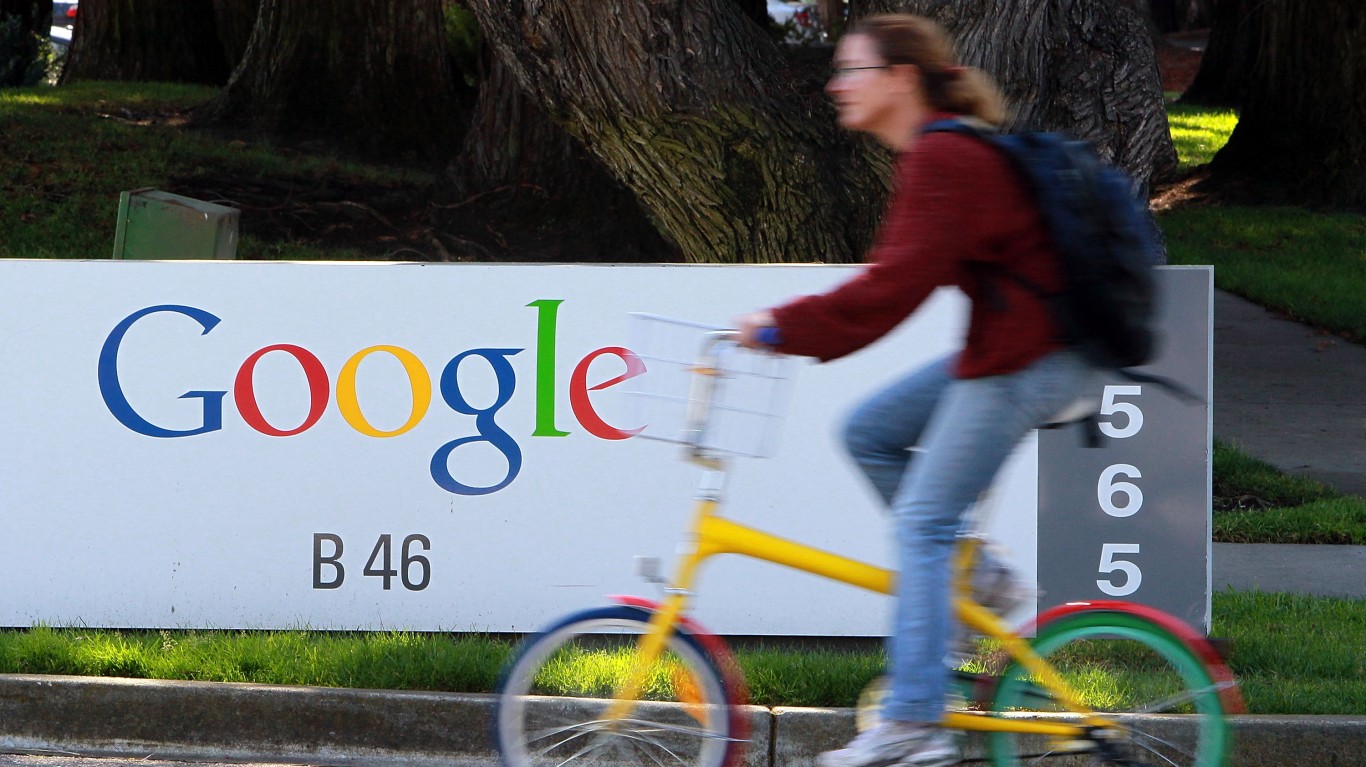
10. Alphabet Inc.
> Worldwide total patent family filings: 3,800
> Top AI functional application filing category: Computer vision, 1,568
> Top AI techniques application filing category: Machine learning, 1,801
Google parent company, Alphabet, acquired DeepMind in 2014, and in addition to using the AI platform to become a Go master (Alpha’s DeepMind AlphaGo application in 2016 beat a human master at the ancient Japanese game of Go), the company has also applied AI and machine learning to reducing its own energy consumption by 40%. The company’s Waymo autonomous vehicle subsidiary is perhaps the best known of Alphabet’s AI and machine learning projects. Some of DeepMind’s capabilities have also been incorporated in Google Search, the company’s cash-generation machine.
[in-text-ad]
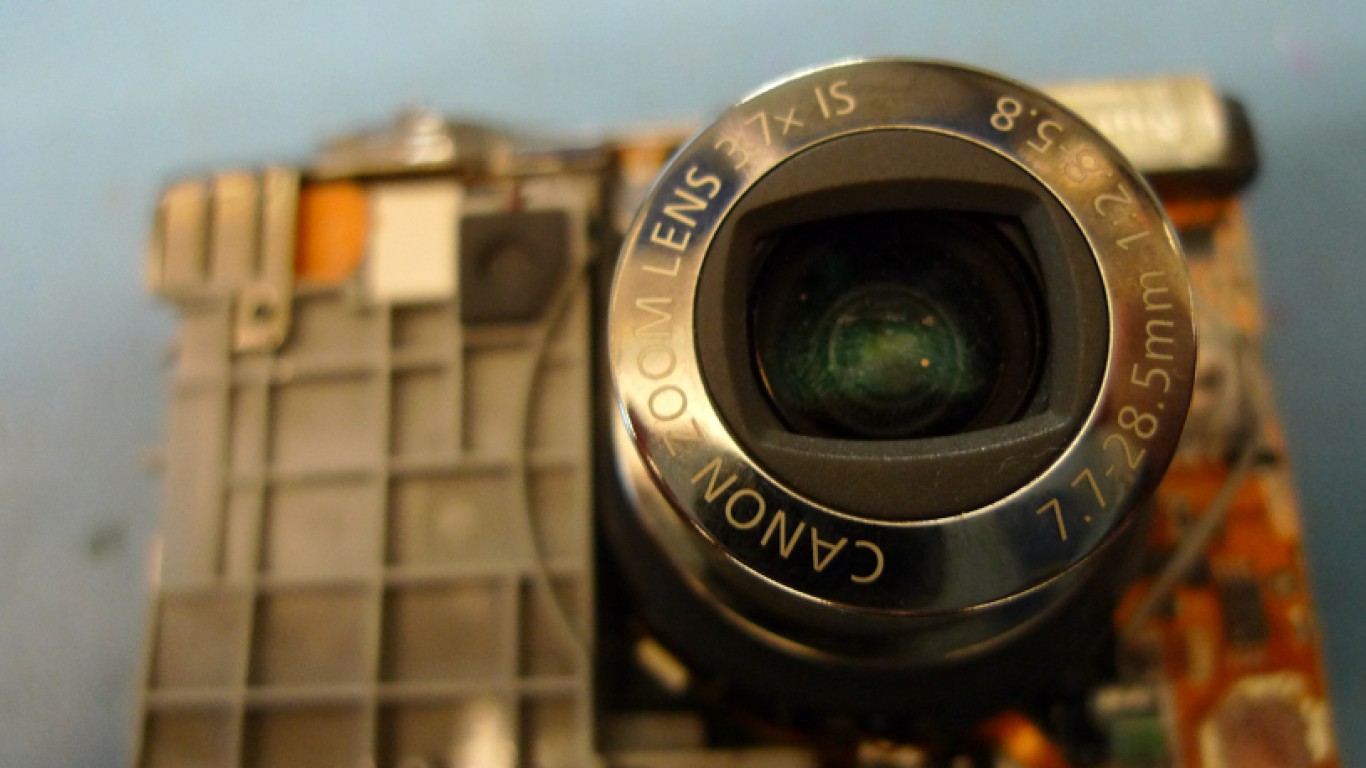
9. Canon
> Worldwide total patent family filings: 3,900
> Top AI functional application filing category: Computer vision, 3,282
> Top AI techniques application filing category: Machine learning, 584
The vast majority of Canon’s patents are related to imaging, not surprising for a company best known for its cameras. In 2016, the company acquired Toshiba’s medical imaging business, and last year it introduced an AI-based platform that can produce out of low-dose, low-quality CT scans high-quality images. For patients this means less radiation per scan; for physicians, it means faster diagnoses.
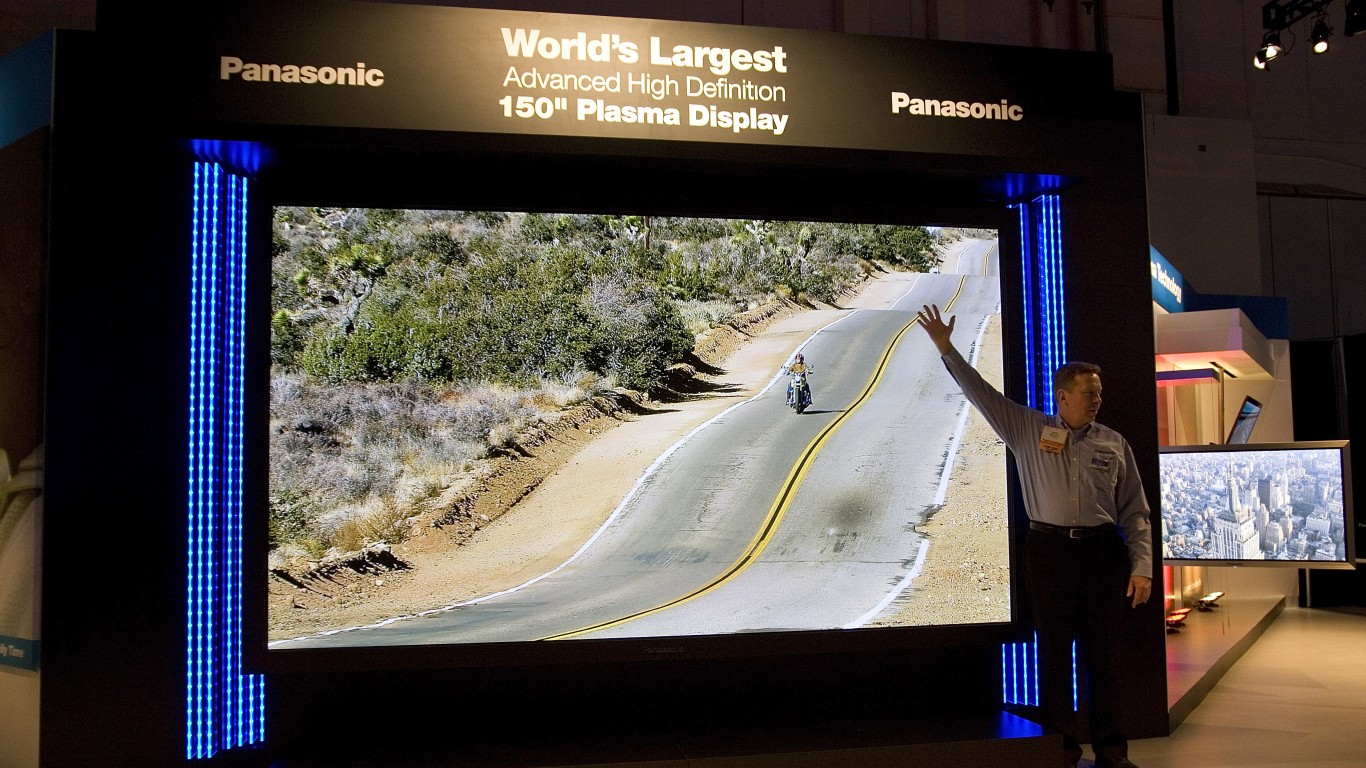
8. Panasonic
> Worldwide total patent family filings: 4,250
> Top AI functional application filing category: Computer vision, 2,726
> Top AI techniques application filing category: Machine learning, 1,057
Given its roots in consumer products, Panasonic has been looking for a way to integrate all those devices under a single control system. Late last year, the company released its HomeX smart home controller that not only communicates with people, but also lets devices communicate with one another. The company’s machine learning, AI, and IoT-capable devices “will develop services and products that update over time based on what we find as they are used,” according to Panasonic President Kazuhiro Tsuga.
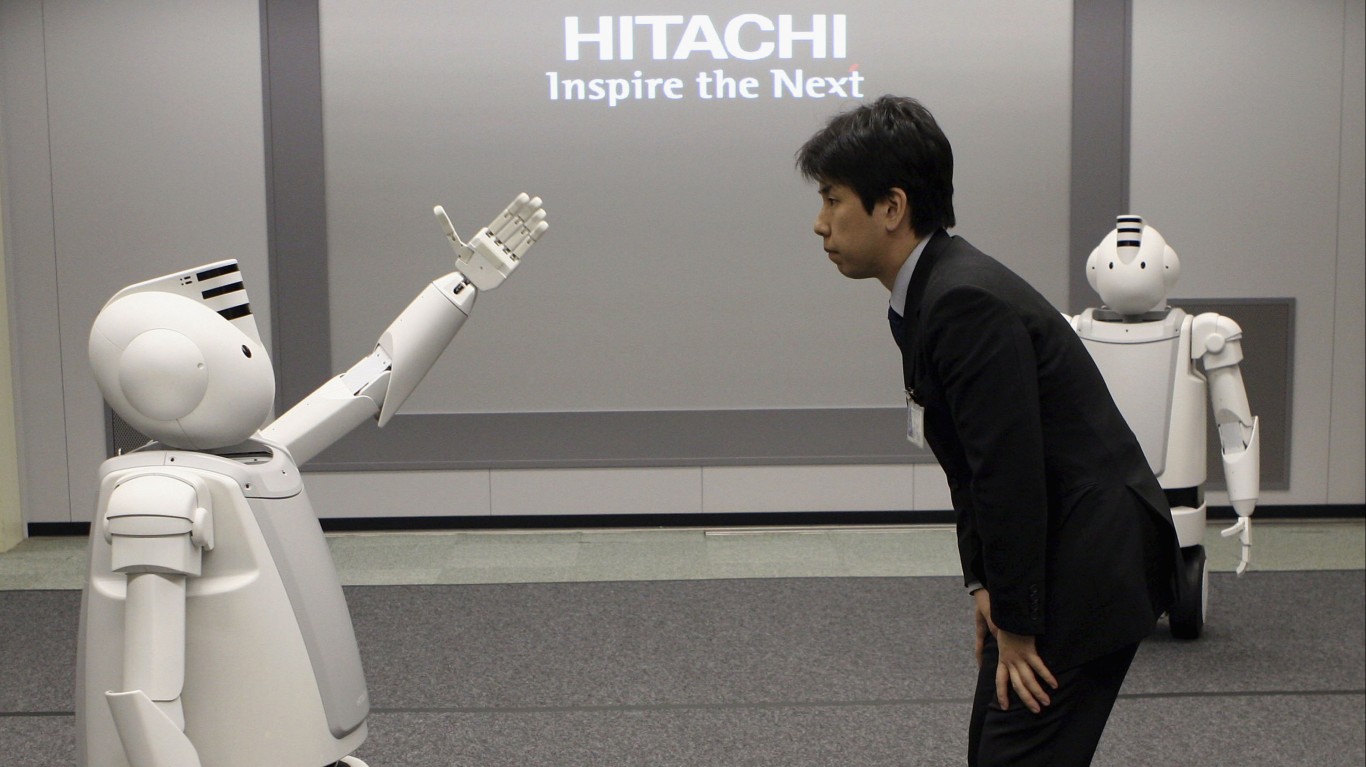
7. Hitachi
> Worldwide total patent family filings: 4,250
> Top AI functional application filing category: Computer vision, 2,310
> Top AI techniques application filing category: Machine learning, 1,302
Hitachi has partnered with Mitsubishi to build fully autonomous digital power plants that will some day be operated by AI. Currently in the proof-of-concept state, the plants need no human intervention except for maintenance. The plant would take orders to produce more or less electricity from an automated grid system, schedule maintenance, and predict three years in advance how the equipment will perform and what capital spending will be needed.
[in-text-ad-2]
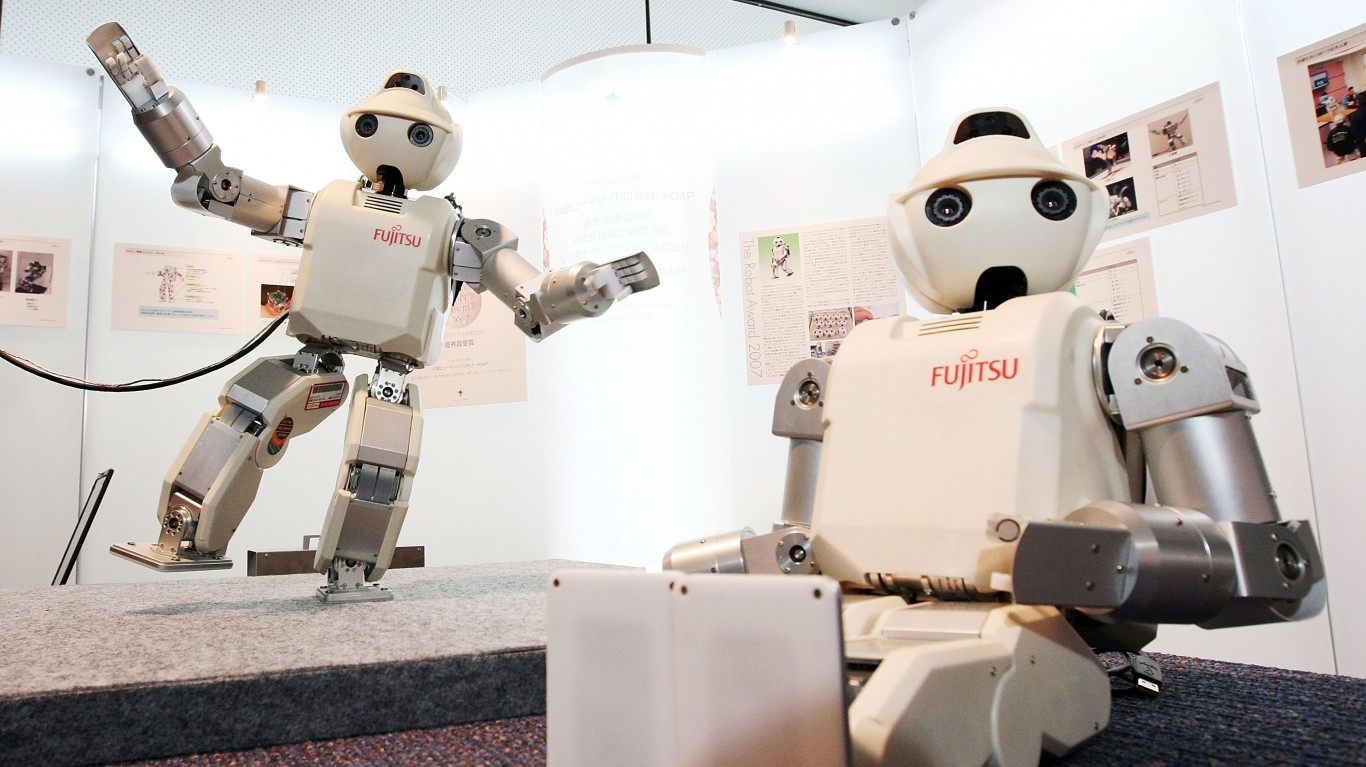
6. Fujitsu
> Worldwide total patent family filings: 4,300
> Top AI functional application filing category: Computer vision, 2,727
> Top AI techniques application filing category: Machine learning, 1,070
While NEC will be checking credentials at the Tokyo Olympics, Fujitsu might be judging the gymnastics competition using lidar-based (laser) technology (also used in many self-driving cars). The technology uses the images to determine the body position of the contestants and passes the information to the judges to help determine an athlete’s final score.
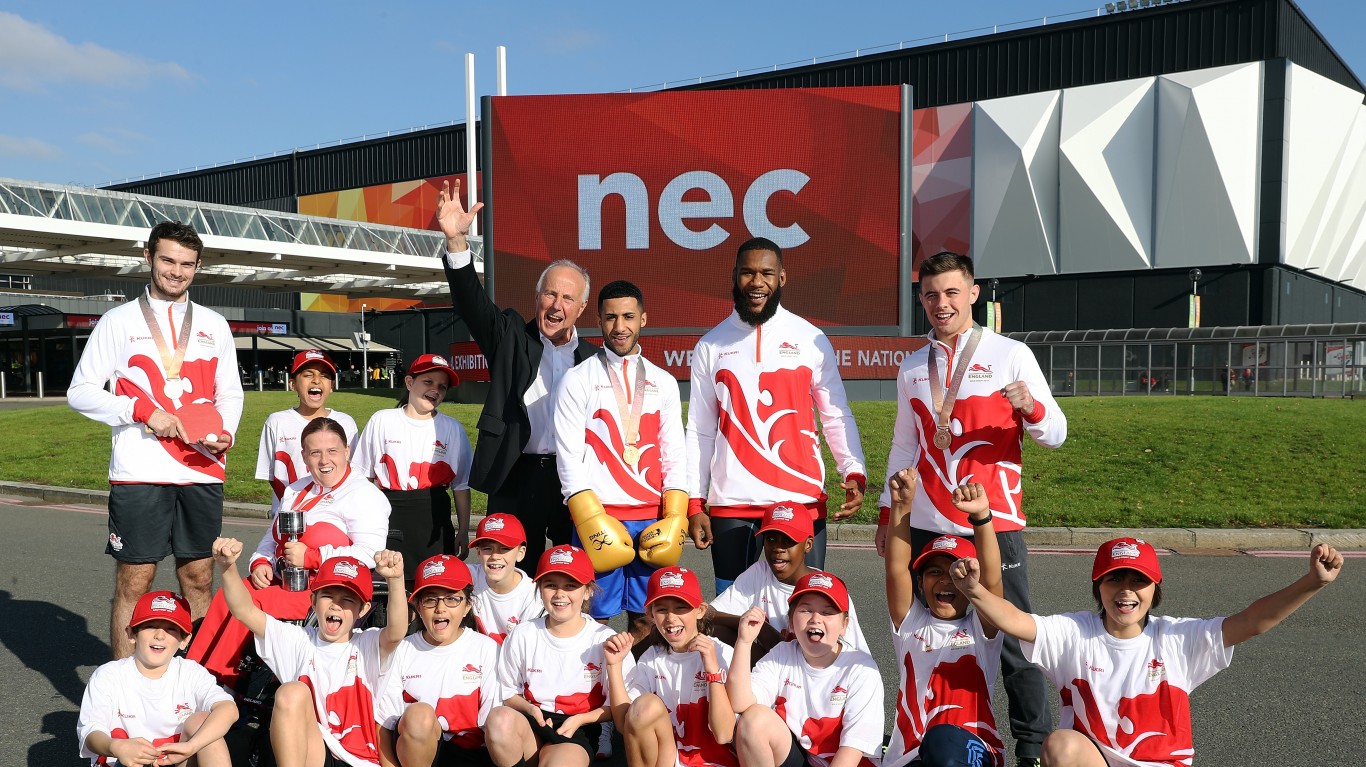
5. NEC
> Worldwide total patent family filings: 4,400
> Top AI functional application filing category: Computer vision, 2,778
> Top AI techniques application filing category: Machine learning, 1,314
NEC is providing a facial-recognition system for the 2020 Tokyo Summer Olympic and Paralympic Games built around the company’s NeoFace AI engine. The system is being designed to identify some 300,000 athletes, media, and other staff by linking photo data within integrated circuit cards carried by accredited people.
[in-text-ad]
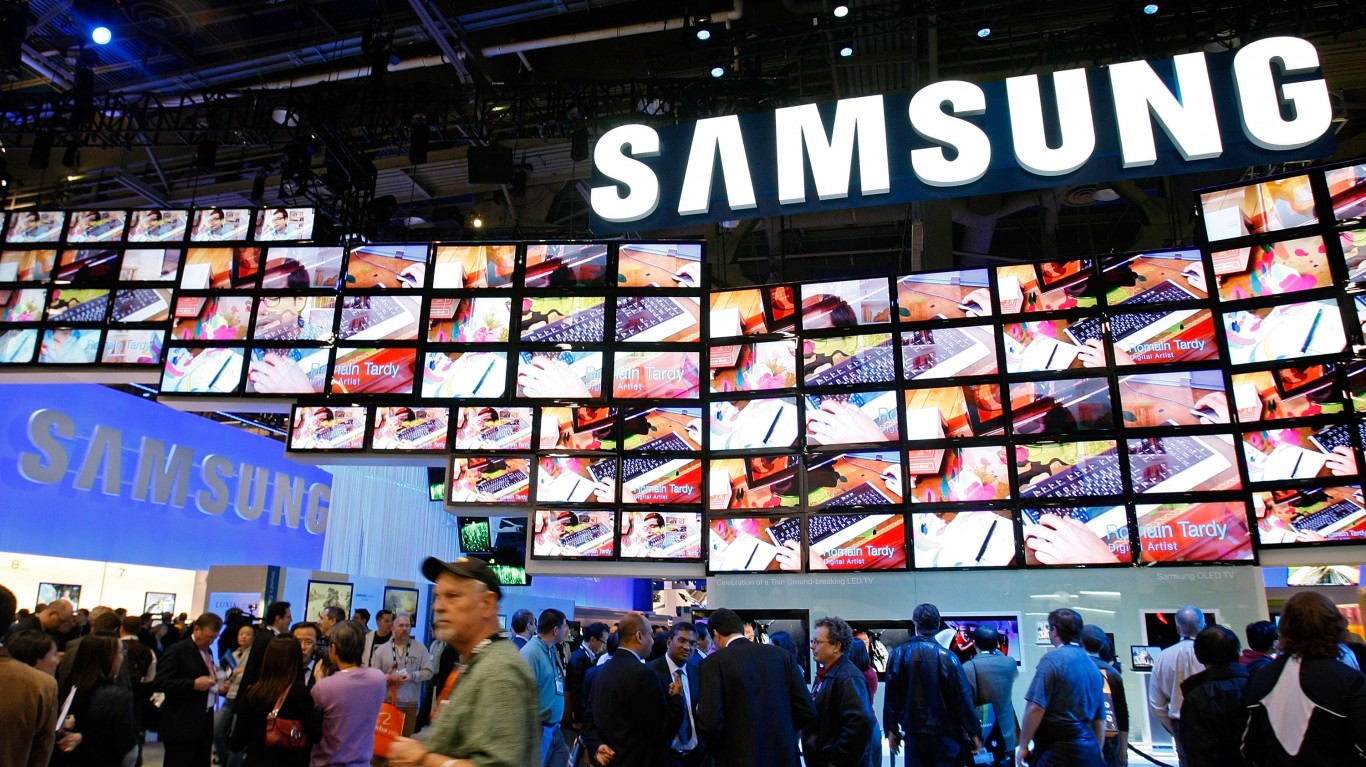
4. Samsung
> Worldwide total patent family filings: 5,100
> Top AI functional application filing category: Computer vision, 3,365
> Top AI techniques application filing category: Machine learning, 1,257
At this year’s Consumer Electronics Show, Samsung showed off eight new projects that leveraged AI technologies in video content creation and perfume-making. It also showed an app that picks keywords out of news articles and uses them to generate a timeline of events. Last May, the company opened AI research centers in the United Kingdom, Canada, and Russia to complement existing research locations in the United States and Korea.
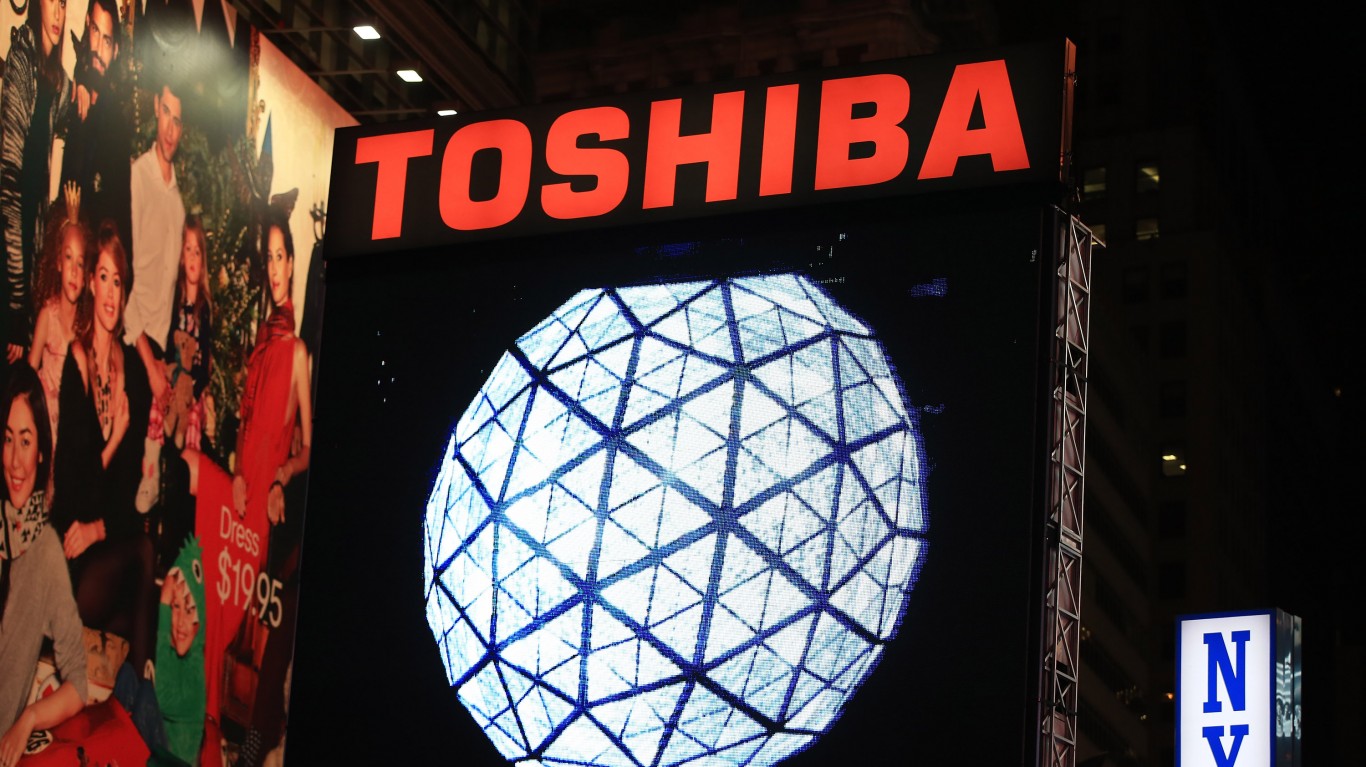
3. Toshiba
> Worldwide total patent family filings: 5,200
> Top AI functional application filing category: Computer vision, 3,417
> Top AI techniques application filing category: Machine learning, 1,229
Toshiba announced in November a five-year plan that it expects would resurrect the company from a years-long slump. In addition to selling its memory chip business, Toshiba expects to spend more than $150 billion on equipment, research, and development of technologies like Internet of Things (IoT) and AI. According to industry research company Research and Markets Inc., IoT will comprise 83% of the AI chipset market by 2023, and the global market for AI embedded in IoT devices will reach $26.2 billion.
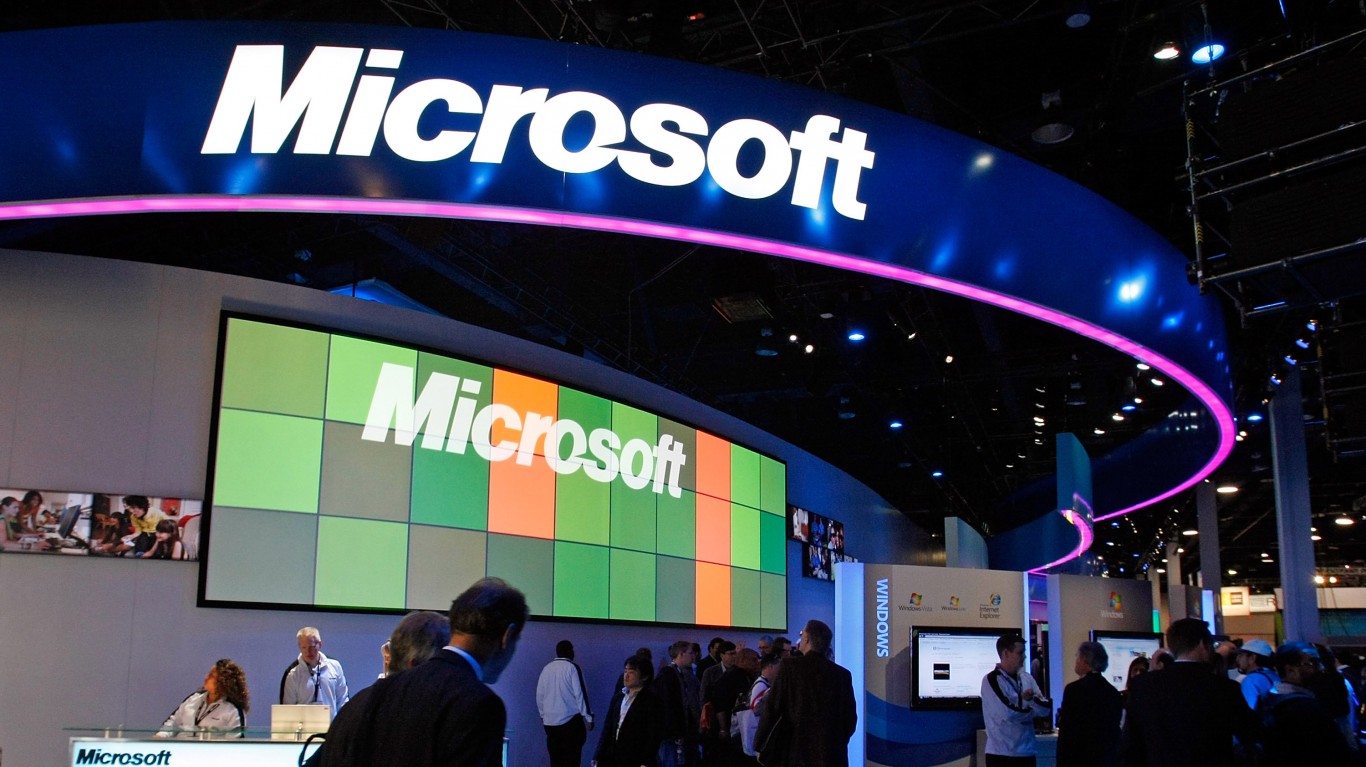
2. Microsoft
> Worldwide total patent family filings: 5,930
> Top AI functional application filing category: Computer vision, 2,428
> Top AI techniques application filing category: Machine learning, 3,079
The maker of the Windows operating system is so serious about AI that when it reorganized the company last March, one of the new divisions was focused on cloud computing and AI. The AI portion of the new division is focused on AI computing infrastructure, frameworks, and high-level services related to perception, knowledge, and cognition.
[in-text-ad-2]
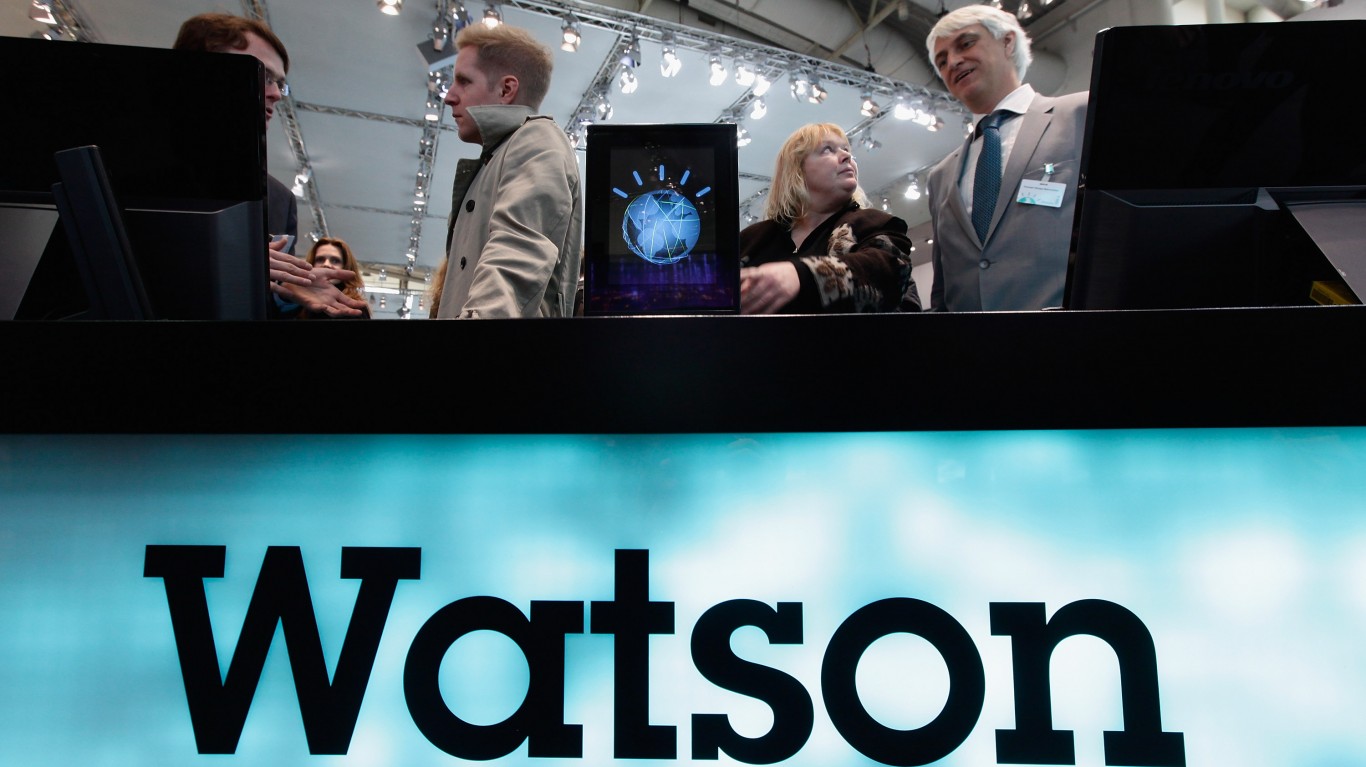
1. International Business Machines
> Worldwide total patent family filings: 8,920
> Top AI functional application filing category: Natural language processing, 2,962
> Top AI techniques application filing category: Machine learning, 3,566
Big Blue received 9,100 total U.S. patents in 2018, a record for the company. Of that total, some 1,600 patents were related to AI, with many related to the IBM’s natural language processing and machine learning techniques. On Feb. 11, when the company’s AI system for debating humans on complex topics, Project Debater, will take on its first challenger.
Detailed Findings
Sheer numbers do not tell the whole story though. The quality of filed patents depends to some degree on the quality of the research that goes into the patent — and research quality can be judged on the basis of how much academic research a country produces (quantity) and how often that work is cited by other researchers (quality).
Last July, China’s Tsinghua University published a report on AI research and development that showed Chinese universities and companies produced more than twice as many highly cited AI research papers than did U.S. institutions and companies. In other words, not only does China produce more research than any other country, but also the research it produces is of high quality.
Another facet of the patent boom in AI is litigation. Just 0.4% (1,264) of AI patent filings are mentioned in litigation cases, according to WIPO’s report. A more substantial 1.25% (4,231) are mentioned in cases where the patent filing is being opposed, while 492 are mentioned in both. The top three defendants in patent litigation cases are Microsoft, Apple, and Alphabet. As with bank robbers, patent trolls go where the money is.
And there is (or soon will be) plenty of money in AI. According to a 2017 report from consulting firm McKinsey, global spending by companies on AI totaled $26 billion to $39 billion in 2016, with the majority ($20 billion to $30 billion) invested by tech firms like Google’s parent Alphabet, IBM, and Microsoft. Forrester Research, which defines AI more broadly, estimated global spending on AI at around $400 billion in 2017 and projects it would rise to $1.2 trillion by 2020.
As with any new technology, though, legal, ethical, and social concerns lag behind development. The WIPO report acknowledges the problem:
[M]ost experts agree that the possibilities offered by [AI] technologies are immense. Even commentators whose reservations with regard to “superintelligence” are substantial and profound … believe the benefits of AI will outweigh the harm. They foresee AI making us more productive, a trend that has been ongoing for hundreds of years, and as Keynes predicted back in the 1930s, it may even lead to a future when there are no dehumanizing jobs, there is more space for leisure, and more people dedicate themselves to the arts or to the community.
The WIPO report also cites Paul Nemitz of the European Commission: “New technologies should not mean new values.” In fact, though, that looks like exactly what might be needed.
Detailed Findings
The World Intellectual Property Organization (WIPO) researchers collected and analyzed patent data using the FAMPAT database. The database indexes patent applications and granted patents from more than a hundred patenting authorities worldwide. a worldwide collection of patents grouped by invention-based families, which indexes patent applications and granted patents from more than a hundred patenting authorities worldwide. There were 59.3 million patent families in the database at the time of the search.
Further details of the search criteria and results are available from this WIPO background paper.
The companies are listed in order of total patent applications worldwide. The worldwide total is an approximation based on a graph in the WIPO report except in the cases of IBM and Microsoft for which totals were given in text.
Get Ready To Retire (Sponsored)
Start by taking a quick retirement quiz from SmartAsset that will match you with up to 3 financial advisors that serve your area and beyond in 5 minutes, or less.
Each advisor has been vetted by SmartAsset and is held to a fiduciary standard to act in your best interests.
Here’s how it works:
1. Answer SmartAsset advisor match quiz
2. Review your pre-screened matches at your leisure. Check out the advisors’ profiles.
3. Speak with advisors at no cost to you. Have an introductory call on the phone or introduction in person and choose whom to work with in the future
Thank you for reading! Have some feedback for us?
Contact the 24/7 Wall St. editorial team.
 24/7 Wall St.
24/7 Wall St.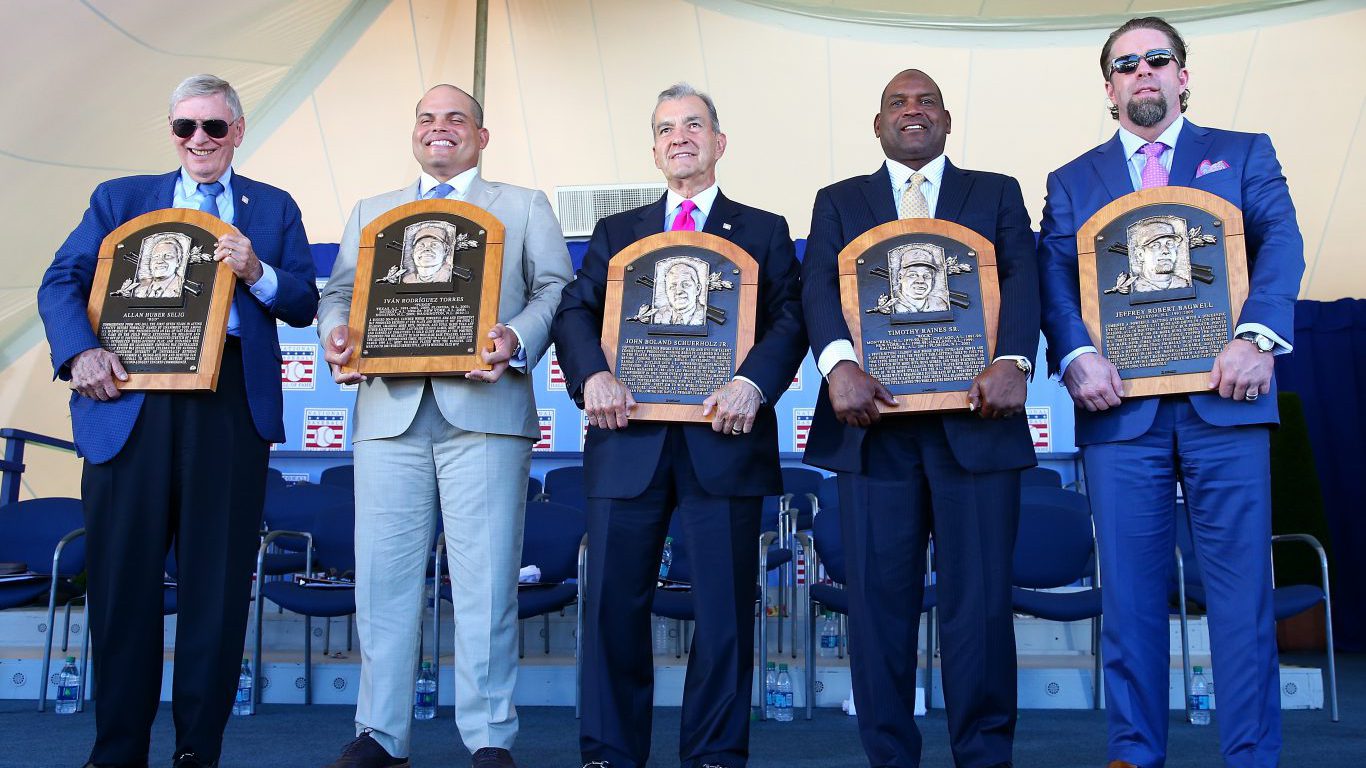 24/7 Wall St.
24/7 Wall St.



